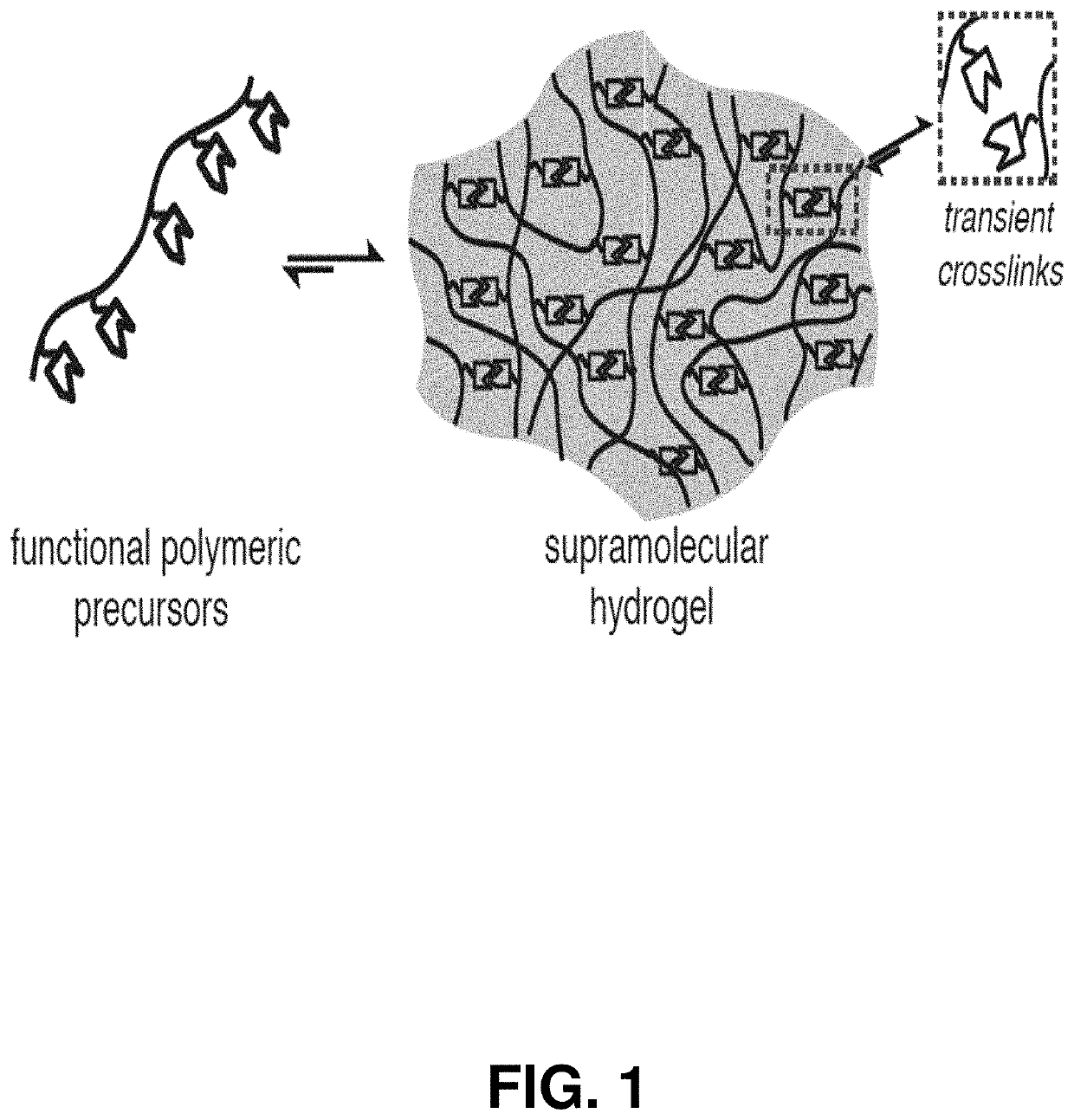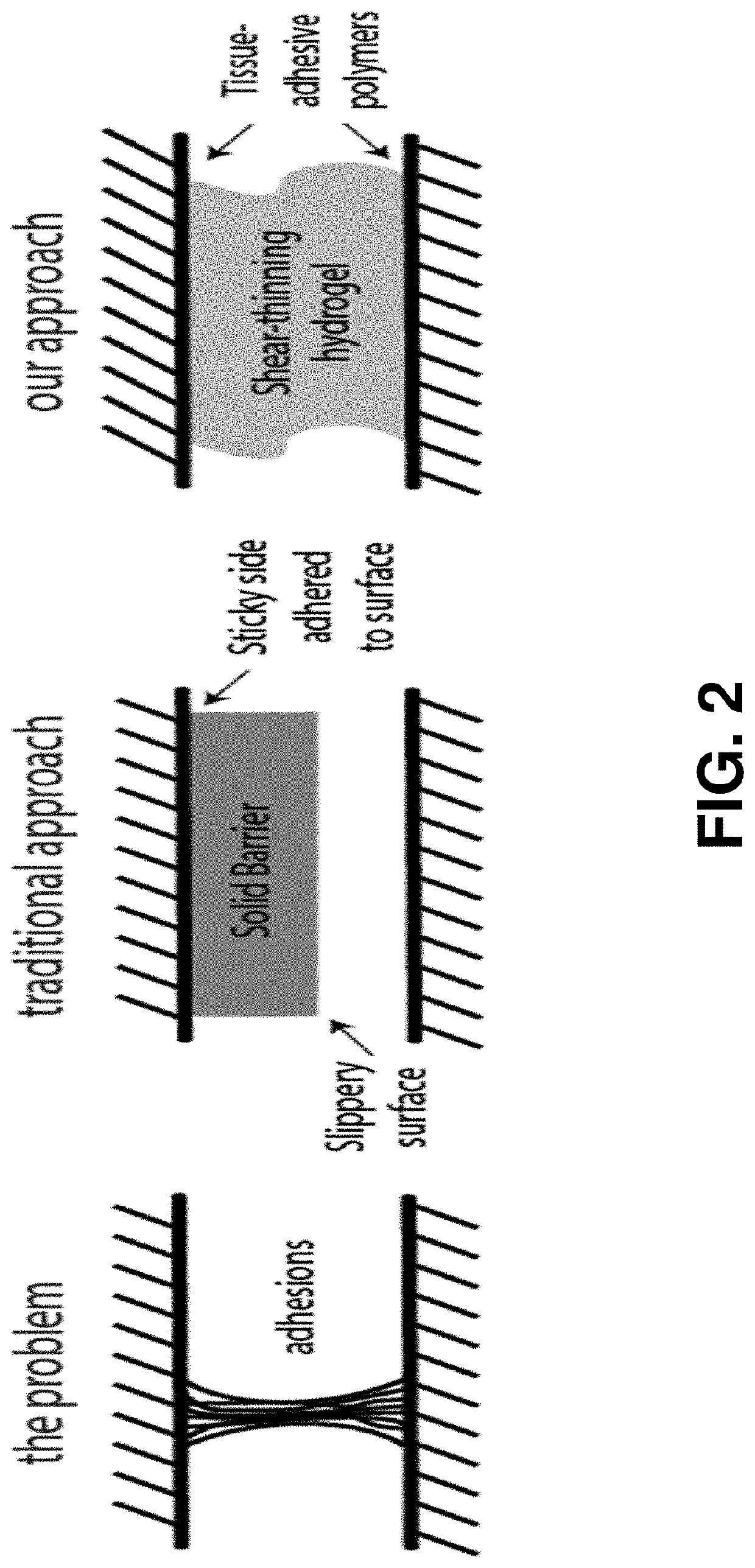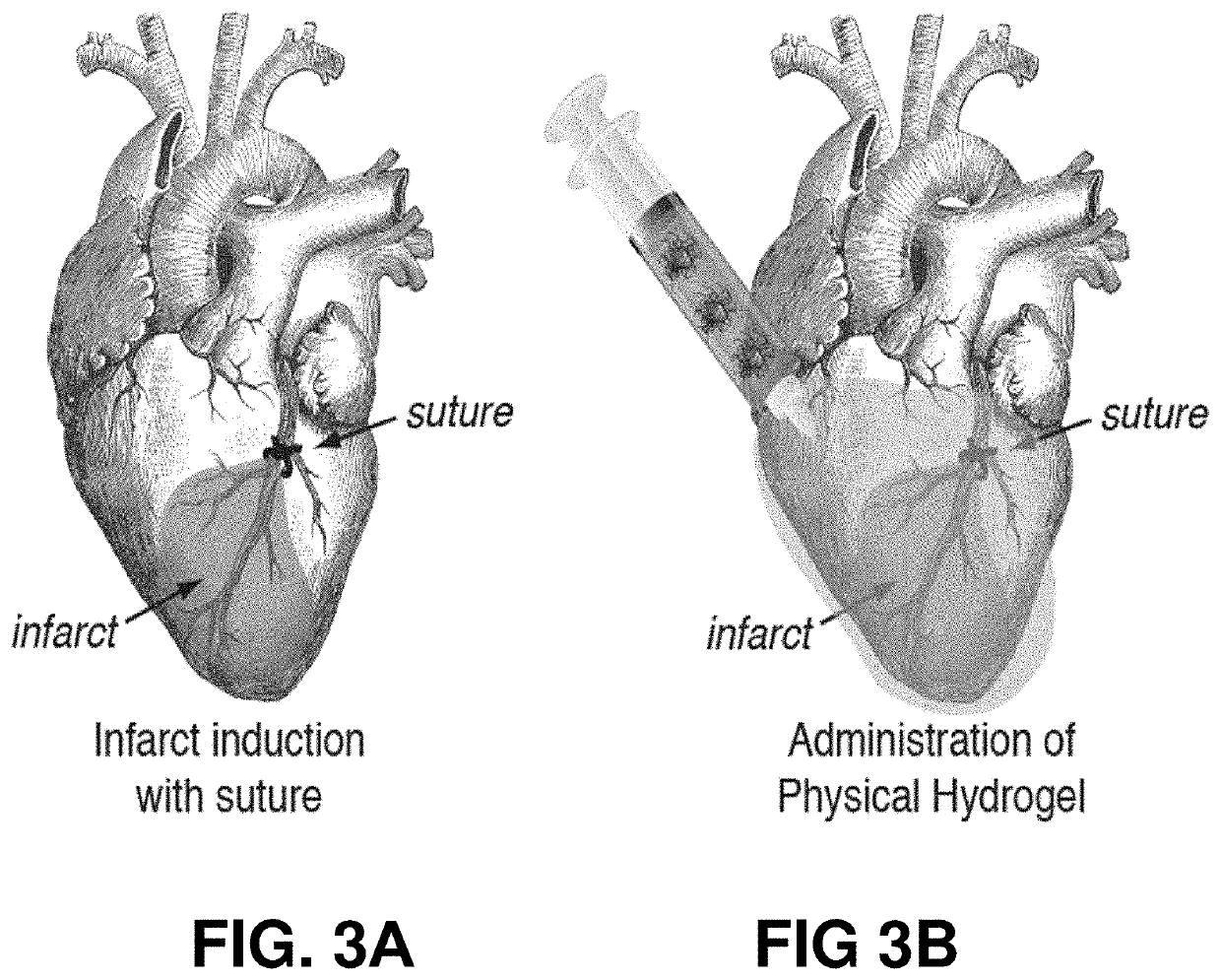Adhesion prevention with shear-thinning polymeric hydrogels
a polymer hydrogel and shear-thinning technology, applied in the direction of medical preparations, pharmaceutical delivery mechanisms, surgery, etc., can solve the problems of presenting a major unmet clinical need, nearly 1 million additional days of inpatient care, and the annual cost of post-operative adhesion treatment to the u.s. healthcare system exceeds $2.5 billion, so as to prevent tissue adhesion and prevent adhesion formation
- Summary
- Abstract
- Description
- Claims
- Application Information
AI Technical Summary
Benefits of technology
Problems solved by technology
Method used
Image
Examples
Embodiment Construction
[0047]An adhesion barrier (i.e., a barrier to scar tissue formation) is described herein that can advantageously include one or more of the following properties: (i) tunable shear-thinning and rapid self-healing to enable spraying or spreading on the tissue of interest, (ii) tissue adherence to ensure local retention over clinically-relevant timeframes, (iii) high degree of biocompatibility, and (iv) viscoelasticity to allow organs and tissues to freely move relative to one another to effectively prevent adhesions (FIGS. 14A-D).
[0048]In some embodiments, the adhesion barrier can include a supramolecular polymeric hydrogel that constitutes a distinct alternative approach to addressing the critical unmet clinical need for a functional adhesion barrier (FIGS. 14A-D). Utilizing non-covalent interactions (FIG. 1), supramolecular polymeric hydrogels exhibiting viscous flow under shear stress (shear-thinning) and rapid recovery when the applied stress is relaxed (self-healing) can be creat...
PUM
| Property | Measurement | Unit |
|---|---|---|
| storage modulus | aaaaa | aaaaa |
| yield stress | aaaaa | aaaaa |
| wt % | aaaaa | aaaaa |
Abstract
Description
Claims
Application Information
 Login to View More
Login to View More - R&D
- Intellectual Property
- Life Sciences
- Materials
- Tech Scout
- Unparalleled Data Quality
- Higher Quality Content
- 60% Fewer Hallucinations
Browse by: Latest US Patents, China's latest patents, Technical Efficacy Thesaurus, Application Domain, Technology Topic, Popular Technical Reports.
© 2025 PatSnap. All rights reserved.Legal|Privacy policy|Modern Slavery Act Transparency Statement|Sitemap|About US| Contact US: help@patsnap.com



